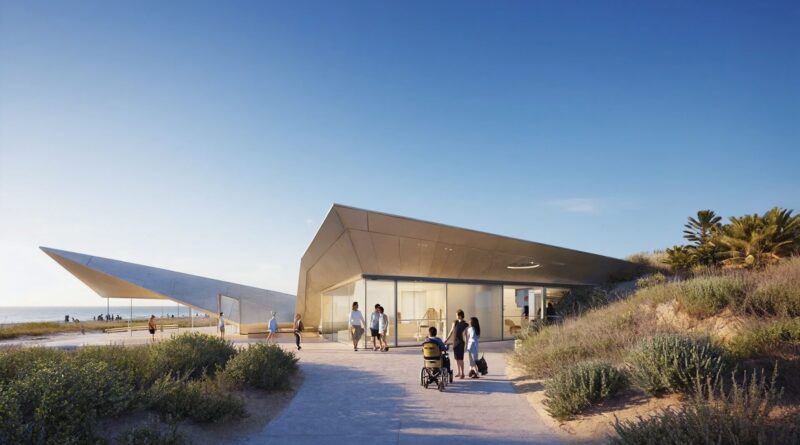
Wheelchair-Accessible Toilets
Wheelchair‑Accessible Toilets in Australia
Find step‑free, accessible toilets across Australia—at transport hubs, shopping centres, parks, beaches, attractions, and service stations. This guide explains what to expect, how to find them quickly, and tips for smooth access when you’re out.
What “accessible” should include
- Step‑free entry with a clear doorway width (ideally 850–900mm+)
- Turning space inside (recommended 1500mm diameter where possible)
- Grab rails beside and behind the toilet
- Lowered basin and mirror with knee clearance
- Reachable fixtures (taps, dryer, paper) and lever/automatic hardware
- Privacy (preferably a unisex/“all‑gender” accessible cubicle)
- Emergency assistance alarm/button where available
Note: If you need a height‑adjustable adult‑size change table or ceiling hoist, see Adult change facilities (Australia).
How to find accessible toilets fast
- Use Aussieloo: Find nearby accessible toilets, parents’ rooms, and adult change facilities with filters and opening hours.
- Open Aussieloo
- Look for signage: “Accessible” or wheelchair symbol; in some places, signage may say “Ambulant” (narrower—usually not suitable for wheelchairs).
- Transport hubs: Major train stations, bus interchanges, ferry wharves, and airports usually have accessible toilets.
- Shopping centres and large supermarkets commonly provide accessible facilities—ask concierge or check the centre map.
- Parks and beaches: Popular foreshore areas often include accessible toilets near car parks, Playgrounds, and surf clubs.
MLAK key (after‑hours access)
Some locked accessible toilets in Australia use the MLAK (Master Locksmiths Access Key) system for extended hours. Eligible people with disability and their carers can apply to purchase a key.
- Where used: Councils, national parks, transport hubs, and select public sites.
- How to check: Venue signage or council facility directories; many listings note “MLAK access.”
- Tip: Carry your key if you regularly visit MLAK‑locked locations.
Etiquette and tips
- Priority use: Leave accessible toilets free for people who need the space/equipment.
- Keep clear: Don’t block the door or transfer space with prams or luggage.
- Report issues: If a facility is out of order or blocked, notify the venue/council staff so they can fix it.
- Have a backup: In busy areas/events, identify a second nearby option in Aussieloo.
By state and territory
Jump straight to state hubs with popular locations and council/park links:
Popular places to look
- Airports: Terminals and arrival/departure levels; check terminal maps for locations.
- Stations/interchanges: Major city stations (lift access), light rail stops, bus interchanges.
- Shopping centres: Usually multiple locations across levels.
- Attractions: Museums, galleries, stadiums, zoos—often publish access maps online.
- Parks/beaches: Look near car parks, surf clubs, Playgrounds, and picnic areas.
- Highways: Service centres and rest areas along major routes.
Event nights and busy periods
- Plan ahead: Big events (e.g., New Year’s Eve, Mardi Gras) add temporary facilities—use official maps and Aussieloo.
- Accessible viewing areas: Many major events include step‑free zones with nearby toilets (registration may be required).
Troubleshooting
- Locked facility: Check if it’s MLAK or venue‑controlled; ask staff/security.
- Out of order: Use Aussieloo to find the next closest option; report the issue to the operator.
- Ambulant only: These are not full‑size wheelchair accessible—look for a unisex accessible room.
Find facilities on the go
Use Aussieloo for real‑time locations, filters (accessible, adult change, parents’ rooms), and opening hours.
Related guides
Disclaimer
Facilities can change without notice. Always check venue/council websites or on‑site notices for the latest information.
FAQs
What’s the difference between accessible and ambulant toilets?
Accessible toilets are larger, with turning space, transfer space, and grab rails for wheelchair users. “Ambulant” toilets are narrower with rails for people who can walk but need support.
How do I get an MLAK key?
Eligible people with disability and their carers can apply to purchase an MLAK through authorised locksmiths. Check your local council or the Master Locksmiths Association for how to apply.
Do service stations have accessible toilets?
Many larger highway service centres do. Check Aussieloo or call ahead for smaller stations.